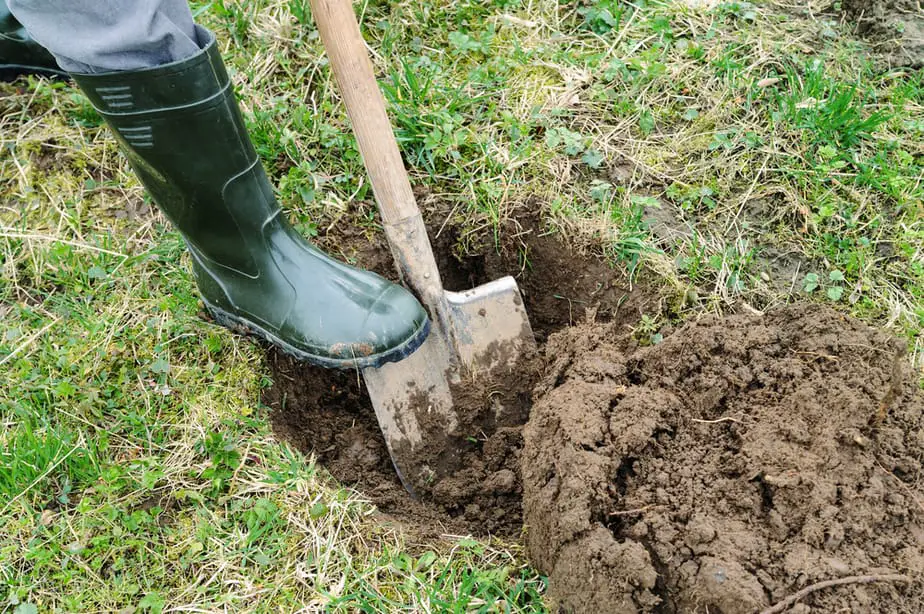
The Life of George Eastman
George Eastman was an American entrepreneur and inventor who is best known for founding the Eastman Kodak Company and popularizing the use of roll film. Born in 1854 in New York, Eastman grew up in a family that struggled financially. Despite this, he managed to attend school until the age of 14, when he had to drop out to help support his family.
Eastman worked as a clerk and bookkeeper for several years before he began to experiment with photography. In 1880, he patented a new type of dry-plate photographic process that was less expensive and easier to use than existing methods. This invention led to the founding of the Eastman Dry Plate Company, which later became the Eastman Kodak Company.
Eastman's Suicide
Despite his success in business and photography, George Eastman struggled with depression for much of his life. In 1932, at the age of 77, he was diagnosed with a degenerative spinal condition that caused him constant pain and limited his mobility.

On March 14, 1932, Eastman wrote a note to his friends and family that read, "To my friends: My work is done. Why wait?" He then shot himself in the heart with a pistol and died instantly.
Legacy of George Eastman
George Eastman's contributions to photography and film have had a lasting impact on the world. His invention of roll film made photography more accessible to the general public, and his company's products became synonymous with the art form. Eastman also gave generously to charity throughout his life, and his philanthropic efforts continue through the George Eastman Museum and the Eastman School of Music.
Despite his tragic end, George Eastman will always be remembered as a pioneer of photography and an innovator in the field of business.
Related video of How Did George Eastman Die

The Tragic Story of Eric Clapton's Son
Eric Clapton is a legendary guitarist and musician known for his incredible talent and contributions to the music industry. However, his personal life has been marked by tragedy, particularly the death of his young son, Conor. This heartbreaking event occurred in March 1991 and left Clapton and his loved ones devastated.

The Circumstances Surrounding Conor's Death
Conor was just four years old at the time of his death. He was the son of Clapton and his then-girlfriend, Italian model and actress Lory Del Santo. The tragic incident occurred at Del Santo's apartment in New York City, where Conor was staying with his mother and a nanny.

On the day of Conor's death, Del Santo had gone out for a walk with the nanny, leaving Conor alone in the apartment. The young boy had been playing hide-and-seek and had gone to the window to look for his mother. Tragically, he fell from the 53rd floor of the apartment building and died on impact.

Clapton's Reaction and Coping Mechanisms
Clapton was understandably devastated by the loss of his son. He had been in New York at the time of Conor's death and rushed to the scene as soon as he heard the news. In the aftermath of the tragedy, Clapton struggled with depression and addiction, turning to drugs and alcohol to cope with his grief.

However, in time, Clapton was able to turn his pain into art. He wrote the song "Tears in Heaven" as a tribute to Conor, which became an international hit and earned Clapton multiple awards. The song is a poignant reflection on grief, loss, and the enduring love between a parent and child.

The Impact of Conor's Death on Clapton's Life
Conor's death had a profound impact on Clapton's life and career. It forced him to confront his own mortality and reevaluate his priorities. Clapton became a vocal advocate for child safety and founded the Crossroads Centre, a rehab facility for those struggling with addiction.

Clapton has also been open about his ongoing struggles with addiction and mental health, using his platform to raise awareness and reduce stigma around these issues. He continues to perform and record music, but his experiences with grief and loss have given his work a deeper emotional resonance.

The Legacy of Conor's Life
Although Conor's life was tragically cut short, his memory lives on through the work of his father and the millions of people who have been touched by Clapton's music. Conor's death was a devastating loss, but it also inspired Clapton to use his talent and platform to make a positive impact on the world.

Conclusion
The death of Eric Clapton's son, Conor, was a heartbreaking tragedy that had a profound impact on Clapton's life and career. Although Conor's life was cut short, his legacy lives on through Clapton's work and the millions of people who have been touched by his music. Clapton's experiences with grief and loss have given his work a deeper emotional resonance, and his advocacy for child safety and addiction awareness has made a positive impact on the world.
Related video of How Did Eric Clapton's Son Die

The Origin of Dutch Apple Pie
Dutch apple pie is a delicious dessert that has been enjoyed by many for centuries. Its name suggests a Dutch origin, but how did it really get its name? The truth is, the origins of Dutch apple pie are somewhat murky, with a few different theories about where the name came from.
One theory is that Dutch apple pie originated in the Netherlands, where it is known as "appeltaart." The Dutch have been making apple pies since the Middle Ages, so it is certainly possible that they were the first to create this delicious dessert. However, there is some debate about whether or not the Dutch version of apple pie is the same as the American version known as Dutch apple pie.

The American Version of Dutch Apple Pie
In America, Dutch apple pie is typically made with a crumbly, streusel-like topping made from flour, butter, and sugar, which is baked on top of sliced apples. This version of apple pie is thought to have originated in Pennsylvania Dutch country in the 1800s, where the term "Dutch" was used to refer to the German-speaking immigrants who settled there.
Some people believe that the term "Dutch" was actually a mispronunciation of the word "Deutsch," which is German for "German." Others believe that the term "Dutch" was used as a way to distinguish this version of apple pie from other types of pie that were popular at the time.

Why Is It Called "Apple Pie"?
Of course, the other part of the name "Dutch apple pie" is "apple pie." So why is it called "apple pie" in the first place? The answer is simple: apples have been a popular ingredient in pies for centuries.
Apples were first brought to America by European settlers in the 1600s, and they quickly became a staple crop. Because apples could be stored for long periods of time without spoiling, they were often used in pies during the winter months when fresh fruit was scarce.

The Evolution of Dutch Apple Pie
Over time, Dutch apple pie has evolved to include a variety of different ingredients and variations. Some recipes call for the addition of raisins, nuts, or even caramel sauce. Others use different types of apples or different spices to give the pie a unique flavor.
Despite its many variations, Dutch apple pie remains a popular dessert in America and around the world. Whether you prefer the streusel-topped version or the more traditional double-crust version, there's no denying the deliciousness of this classic dessert.

In Conclusion
So there you have it: the origins of Dutch apple pie are somewhat murky, but it is clear that this delicious dessert has been enjoyed by many for centuries. Whether you prefer the Dutch version or the American version, there's no denying the sweet, crumbly goodness of a freshly baked apple pie.
Related video of How Did Dutch Apple Pie Get Its Name

The Masked Villain
Darth Vader is one of the most iconic villains in the history of cinema. He is known for his ominous black suit, his asthmatic breathing, and his signature red lightsaber. But have you ever wondered how he ate with that mask on?
As we all know, Darth Vader's mask is a crucial part of his survival. It helps him breathe and regulates his body temperature. But it also covers his entire face, including his mouth. So how did he eat?

The Feeding Tube
The answer is actually quite simple. Darth Vader had a feeding tube installed in his mask. This tube allowed him to consume liquids and pureed foods without having to remove his mask.
The feeding tube was connected to a nutrient-rich liquid that provided him with all the sustenance he needed. This liquid was delivered directly to his stomach through the tube.

The Importance of Nutrition
As a Sith Lord, Darth Vader needed to be in peak physical condition at all times. His mask and feeding tube ensured that he received the proper nutrition to maintain his strength and agility.
In fact, his mask was specifically designed to monitor his vital signs and adjust the flow of the nutrient-rich liquid accordingly. This allowed him to stay healthy and strong, even in the midst of battle.
The Challenges of Eating with a Mask
Eating with a mask on is not an easy task, even with a feeding tube. Pureed foods can be messy and difficult to consume, and liquids can be hard to swallow without the proper tools.
But Darth Vader was a master of the Force, and he used his powers to make eating with his mask on a breeze. With a simple wave of his hand, he could move his food and drink with ease.
The Importance of Continuity
One of the key reasons why Darth Vader's mask and feeding tube were so important was to maintain continuity throughout the Star Wars saga. By keeping his mask on at all times, Darth Vader remained a constant presence in the series.
Without his mask, he would have been just another character. But with it, he became an icon.
The Legacy of Darth Vader
Today, Darth Vader remains one of the most beloved characters in the Star Wars universe. His mask and feeding tube are just two of the many elements that make him so iconic.
But more than anything else, it is his complex and tragic backstory that makes him so compelling. From his fall to the dark side to his eventual redemption, Darth Vader's story is one that will continue to captivate audiences for generations to come.

The Enduring Popularity of Star Wars
Star Wars is more than just a movie franchise. It is a cultural phenomenon that has captivated audiences for over four decades.
From Darth Vader to Luke Skywalker, the characters and stories of Star Wars have become a part of our collective consciousness. And with new movies, TV shows, and merchandise being released all the time, the popularity of the franchise shows no signs of slowing down.

The Importance of Good Nutrition
While Darth Vader's feeding tube may seem like a sci-fi fantasy, the truth is that many people rely on similar devices to get the nutrition they need.
Whether it's due to a medical condition, a physical disability, or simply a lack of access to food, millions of people around the world struggle to get the sustenance they need to survive.
That's why it's so important to support organizations and initiatives that work to address hunger and malnutrition. By doing so, we can help ensure that everyone has access to the food they need to live healthy, fulfilling lives.
Conclusion
In conclusion, Darth Vader's mask and feeding tube were crucial to his survival and his ability to maintain his strength as a Sith Lord. While eating with a mask on is not an easy task, Darth Vader was able to use the Force to make it look effortless.
But beyond the fictional world of Star Wars, it's important to remember that good nutrition is essential for all of us. By supporting organizations that work to address hunger and malnutrition, we can help ensure that everyone has access to the food they need to thrive.
Related video of How Did Darth Vader Eat
The Life of Julius Caesar
Julius Caesar was a Roman general and statesman who played a critical role in the events that led to the demise of the Roman Republic and the rise of the Roman Empire. Born in 100 BC, Caesar was a member of the patrician class and enjoyed a privileged upbringing. He was a brilliant military commander and conquered much of Gaul, modern-day France, during his campaigns from 58 to 50 BC. After returning to Rome, Caesar became involved in politics and was appointed dictator for life in 44 BC.
:max_bytes(150000):strip_icc()/DeathofCeasar-58cfe3c33df78c3c4f0e566c.jpg)
The Assassination of Julius Caesar
Despite his achievements, Caesar's increasing power and ambition made him a target for his enemies. On March 15, 44 BC, a group of senators led by Marcus Brutus and Gaius Cassius plotted to assassinate Caesar. The assassination took place in the Senate House, where Caesar was stabbed 23 times. He died at the age of 56.

Caesar's Last Words
Caesar's last words are a matter of debate among historians. According to the Roman historian Suetonius, Caesar's final words were "Et tu, Brute?" which means "You too, Brutus?" This phrase has become famous and is often quoted in literature and popular culture. However, other sources suggest that Caesar did not say these words and that they were invented by later writers.

The Aftermath of Caesar's Death
Caesar's death was a turning point in Roman history. It plunged the Roman Republic into turmoil and led to a period of civil war. The assassins hoped that Caesar's death would restore the Republic, but instead it paved the way for the rise of his adopted son, Octavian, as the first Roman Emperor.

The Legacy of Julius Caesar
Julius Caesar's legacy is complex and controversial. He is remembered as a great military commander who expanded the Roman Empire and brought stability to the Mediterranean world. He was also a skilled politician who introduced reforms and was popular among the Roman people. However, he was also accused of tyranny and his increasing power and ambition made him enemies among the Roman elite. His death marked the end of the Roman Republic and the beginning of the Roman Empire.

Conclusion
Julius Caesar was one of the most important figures in Roman history and his death was a pivotal moment that changed the course of Roman history. The circumstances of his death and his final words continue to fascinate historians and the public alike. His legacy is complex and controversial, but his impact on the ancient world cannot be denied.
Related video of How Did Caesar Die?

Asthma is a common chronic respiratory disease that affects millions of people worldwide. It is characterized by inflammation of the airways that causes difficulty in breathing, coughing, wheezing, and chest tightness. But how did asthma get its name? Let's explore the history behind this condition and its name.
Early Descriptions of Asthma

The earliest descriptions of asthma date back to ancient Egypt, where it was known as "Pnigophobia" or "the fear of suffocation." In ancient Greece, it was referred to as "asthma," which means "gasping for breath."
The Evolution of the Term Asthma

Over the centuries, the term asthma has evolved to include a range of respiratory conditions that cause difficulty in breathing. In the early 19th century, the term asthma was used to describe any condition that caused shortness of breath or difficulty in breathing.
It wasn't until the late 19th century that asthma was recognized as a distinct medical condition. In 1895, a French physician named Henry Salter identified asthma as a chronic inflammatory disease of the airways. He also coined the term "bronchial asthma" to describe the narrowing of the airways that occurs during an asthma attack.
The Role of Inflammation in Asthma

The discovery of inflammation as a key factor in asthma led to the development of new treatments for the condition. In the early 20th century, doctors began using epinephrine to relieve asthma symptoms by relaxing the airways. Later, the development of corticosteroids revolutionized the treatment of asthma by reducing inflammation and preventing asthma attacks.
The Impact of Asthma on Society

Asthma is a significant public health concern that affects people of all ages, races, and ethnicities. It is estimated that over 300 million people worldwide have asthma, and the number is increasing every year. Asthma can have a significant impact on a person's quality of life, causing them to miss school, work, and social events.
It also places a significant burden on healthcare systems, with asthma-related hospitalizations and emergency department visits costing billions of dollars each year.
The Future of Asthma Treatment

The future of asthma treatment looks promising, with ongoing research into new treatments that target the underlying causes of the condition. This includes new medications that target specific inflammatory pathways, as well as new approaches to immunotherapy that could help reduce the severity of asthma attacks.
Researchers are also exploring the use of digital health technologies to better monitor and manage asthma symptoms. This includes wearable devices that track a person's breathing patterns and smartphone apps that provide personalized asthma management plans.
Conclusion
So, how did asthma get its name? The term asthma has evolved over the centuries to describe a range of respiratory conditions that cause difficulty in breathing. Today, asthma is recognized as a chronic inflammatory disease of the airways that affects millions of people worldwide.
While asthma can have a significant impact on a person's quality of life, ongoing research into new treatments and technologies offers hope for better management of the condition in the future.
Related video of How Did Asthma Get Its Name?

Have you ever wondered how deep you can dig in your backyard? Maybe you want to build a pool, a pond, or a bunker. Or maybe you're just curious. Whatever your reason, digging a hole in your backyard can be a fun and challenging project. But how deep can you go before you hit rock bottom?
The Shallow End

Most people can easily dig a shallow hole in their backyard. This might be a few inches deep, for planting a flower or burying a pet, or it might be a few feet deep, for building a small pond or foundation. You can do this with a shovel, a pick, or even a small excavator if you have one. Just be sure to call your local utilities to make sure you don't accidentally hit any gas, water, or power lines.
Going Deeper

If you want to go deeper, you'll need some heavy-duty equipment and a lot of patience. Depending on where you live, you might hit bedrock, clay, or water at a certain depth. In some areas, there might be regulations or permits required for digging deep holes. You don't want to accidentally cause a cave-in or a flood. And you don't want to risk your safety or your property.
The Limits

So, how deep can you dig in your backyard? The answer depends on many factors, such as:
- The type of soil or rock in your area
- The water table or aquifer level
- The slope or stability of your land
- The presence of underground utilities or structures
- The tools and skills you have available
In general, most people can dig a hole up to 6 feet deep without too much difficulty. Beyond that, you'll need more specialized equipment and expertise. Some professional excavators can dig holes up to 100 feet deep, but that's not something you should attempt on your own.
The Risks

Before you start digging in your backyard, you should be aware of the risks involved. These include:
- Collapsing or caving in of the walls or roof of the hole
- Exposure to toxic gases or fumes from the soil or water
- Injury from falling, slipping, or tripping
- Contact with live wires, pipes, or other hazardous materials
- Damage to your property or your neighbors' property
To minimize these risks, you should always:
- Wear appropriate clothing, footwear, and safety gear
- Use proper tools and equipment, and maintain them in good condition
- Follow the instructions and warnings of the manufacturers
- Have a plan for emergencies, such as injuries or accidents
- Get professional advice or assistance if you're unsure or inexperienced
The Rewards

If you're willing to take the risks and do the work, digging a hole in your backyard can be a rewarding experience. You can:
- Create a new feature, such as a pond, a pool, or a garden
- Uncover hidden treasures, such as fossils, rocks, or artifacts
- Learn about the geology, hydrology, or ecology of your area
- Enjoy the physical exercise and mental challenge of digging
- Bond with your family, friends, or neighbors over a shared project
The Conclusion
So, how deep can you dig in your backyard? The answer is: it depends. But whatever depth you choose, make sure you do it safely and responsibly. Don't take unnecessary risks, and don't damage your property or your environment. And don't forget to have fun and enjoy the journey.
Related video of How Deep Can You Dig In Your Backyard?
Colorblindness, also known as color vision deficiency, is a condition where individuals have difficulty distinguishing certain colors. It affects approximately 8% of men and 0.5% of women worldwide. In this article, we will discuss how colorblind people see and what causes colorblindness.
What is Colorblindness?

Colorblindness is a genetic condition that affects the way the cones in the retina of the eye respond to light. The cones are responsible for detecting color and are located in the back of the eye. There are three types of cones, each with a different sensitivity to light: red, green, and blue.
People with colorblindness have a reduced sensitivity to one or more of these colors, which can make it difficult to distinguish between colors that appear similar to them. For example, a person with red-green colorblindness may have trouble telling the difference between red and green.
Types of Colorblindness

There are several types of colorblindness, but the most common are red-green colorblindness and blue-yellow colorblindness. Red-green colorblindness is the most common and affects around 8% of men. Blue-yellow colorblindness is much rarer and affects only around 1% of men.
In rare cases, some people may have complete color blindness, which means they see only shades of gray. This condition is extremely rare and is caused by a total absence of cones in the retina.
How Colorblind People See Colors

Colorblind people can see colors, but they have difficulty distinguishing between certain colors. For example, someone with red-green colorblindness may see red and green as shades of brown or gray. They may also have difficulty distinguishing between blue and purple, or pink and gray.
Most colorblind people can still see vibrant colors, but they may appear slightly different to them. For example, a bright red object may appear more subdued or dull to someone with red-green colorblindness.
Causes of Colorblindness
Colorblindness is usually an inherited condition, meaning it is passed down from parents to their children. The gene responsible for color vision is located on the X chromosome, so men are more likely to be colorblind than women. However, some people can develop colorblindness later in life due to certain medical conditions or medications.
Some medical conditions that can cause colorblindness include diabetes, multiple sclerosis, and Parkinson's disease. Certain medications, such as some antibiotics and anti-seizure drugs, can also cause color vision problems.
Living with Colorblindness
Colorblindness can be frustrating at times, but most people with the condition learn to adapt and live normal lives. They may rely on other cues, such as brightness or contrast, to distinguish between colors. Some colorblind people may also use special glasses or software to help them see colors more accurately.
It's important to note that colorblindness is not a disability and does not affect a person's intelligence or ability to perform certain tasks. In fact, some people with colorblindness may have an advantage in certain professions, such as in the military or in the field of art.
Conclusion
Colorblindness is a common condition that affects the way people see colors. While it can be frustrating at times, most people with colorblindness learn to adapt and live normal lives. It's important to remember that colorblindness is not a disability and does not affect a person's intelligence or ability to perform certain tasks.
Related video of How Colorblind People See

Water is an essential element for life. It is used for drinking, bathing, and many other purposes. However, water can also be dangerous and even deadly. In this article, we will explore some of the ways water can be dangerous.
Drowning

Drowning is the most common cause of death by water. It occurs when a person's airway is blocked by water, and they are unable to breathe. This can happen in swimming pools, lakes, rivers, and even in bathtubs. Drowning can happen quickly and silently, making it difficult to detect until it is too late.
To prevent drowning, it is important to always supervise children around water, learn to swim, wear life jackets when boating, and never swim alone. It is also important to know the signs of drowning, such as gasping for air, inability to speak, and a blank or panicked expression.
Waterborne Illnesses

Water can also be a source of illness. Waterborne diseases are caused by bacteria, viruses, and parasites that contaminate water sources. These illnesses can cause diarrhea, vomiting, and even death.
To prevent waterborne illnesses, it is important to drink clean and safe water. This can be achieved by boiling water, using water filters, or drinking bottled water. It is also important to practice good hygiene, such as washing hands before eating and after using the bathroom.
Floods
Floods can occur when water levels rise above their normal levels. They can be caused by heavy rain, melting snow, or even dam failures. Floods can be dangerous because they can cause property damage, displace people from their homes, and even cause death.
To prepare for floods, it is important to have an emergency plan in place. This can include having a designated meeting place, storing food and water, and having a way to receive emergency alerts. It is also important to avoid walking or driving through floodwaters, as they can be deeper than they appear and can contain debris.
Electrocution

Water and electricity do not mix. Electrocution can occur when electrical currents pass through water and into a person's body. This can happen in swimming pools, hot tubs, and even in flooded areas.
To prevent electrocution, it is important to avoid swimming during thunderstorms and to never touch electrical appliances when you are wet. It is also important to have electrical systems checked regularly and to follow safety guidelines when using electrical equipment around water.
Conclusion
Water is a vital element for life, but it can also be dangerous. Drowning, waterborne illnesses, floods, and electrocution are just some of the ways water can be unsafe. By taking precautions and being aware of the risks, we can enjoy water safely and avoid its dangers.
Related video of How Can Water Be Dangerous
ads
Search This Blog
Blog Archive
- August 2022 (31)
- July 2022 (31)
- June 2022 (31)
- May 2022 (31)
- April 2022 (29)
- March 2022 (31)
- February 2022 (28)
- January 2022 (31)
- December 2021 (7)
About Me
